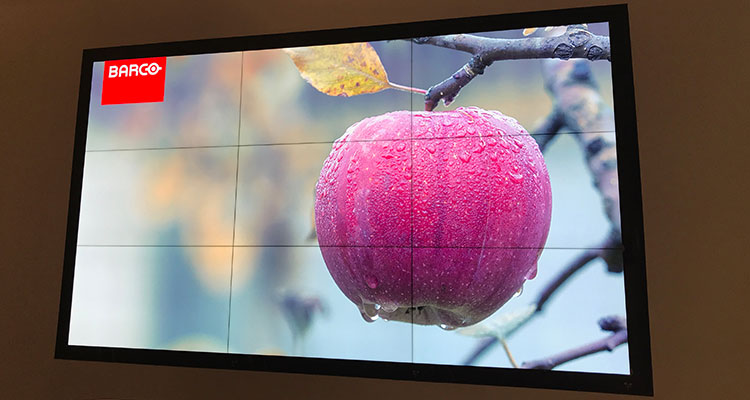
Like many press people, I don’t like these words. You see, I think that you should never describe your own product as either of those things — if your product is indeed disruptive or game-changing, let someone else call it that. I have also over the years had many a PR person tell me that their product had the thinnest bezel, the quietest fan, the longest life, the smallest pixel pitch and so forth, which upon investigation turned out to not be true at all.
But Barco, particularly for a “display company,” does have a history of unique product entries. Barco’s ClickShare is actually a disruptive product, arguably the most game-changing in our market for the last decade. (I hated writing that sentence so, so much.) With all that in mind, I headed to New York to see UniSee.
But onto the good stuff. UniSee becomes way more interesting when you take it apart.
In designing a video wall, Barco wanted to rethink how a video wall should work. In the end, they built an entire system, including the mount and cabling.
UniSee comes with a simple wrench that fits into the mount and cranks the screens into place. I did this myself while at the event for a wall that was three displays high and was able to do it pretty easily. (Barco has tested this manual wrench system for video walls up to ten displays high.) There’s also a place on the mount you can push the wrench in and it brings the display column down and to the right, giving you an access gap of two inches or so for servicing. It’s hard to describe without seeing, so I recommend you watch one of the videos I shot while there. I interviewed UniSee designer Tom Dewaele, and shot a video of Tom and Corwin Hamm, Barco’s business development manager for Barco control rooms and virtual reality solutions, demonstrating in detail how UniSee works. I’d also really encourage you to see it in person when you can. Barco says that from its testing, it anticipates dealers being able to save at least 20 percent on labor and install time versus other video wall systems.
For now, UniSee is really just one SKU – the panel plus mounting system are only available in the 55-inch, 800 nit, wall-mount version. Barco is working on a free-standing floor model that can be used in lieu of mounting on a wall, and to accommodate curved video walls.
UniSee will initially be available through Almo Pro A/V and Starin only. It will be available by the end of the year, according to Barco.
So is UniSee really that big of a deal? I think so — mainly because I actually felt like I could potentially put this video wall up myself. I am very interested to see what you, the integrators, think. Will this replace your other video wall products? Do you think it will be a big time-saver? Is it well-priced? We’d love to know your thoughts.
You can learn more about UniSee here.